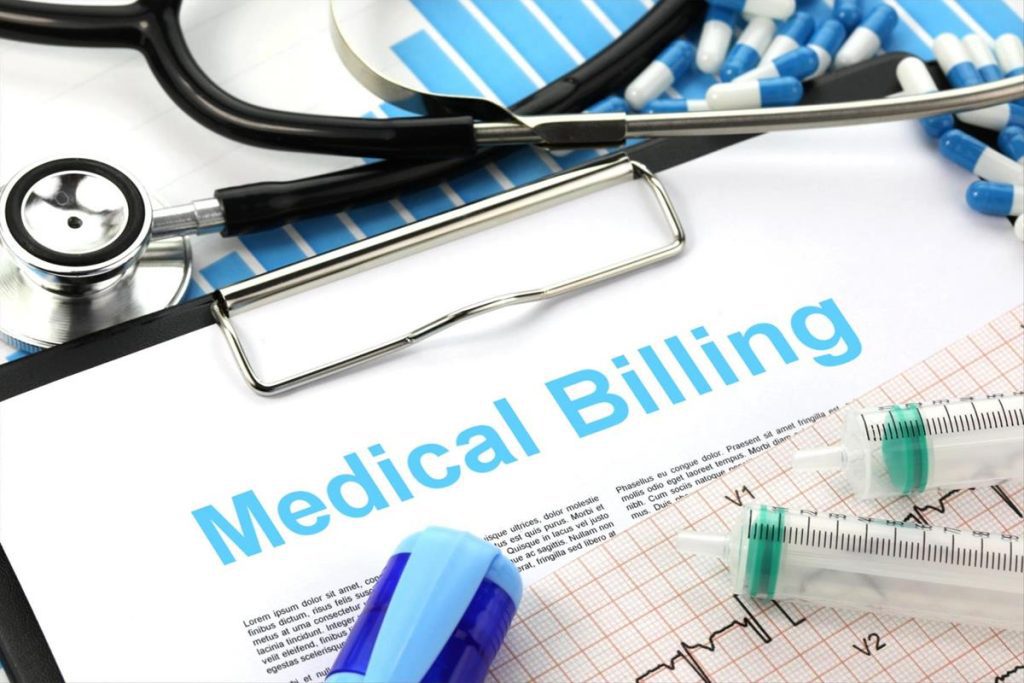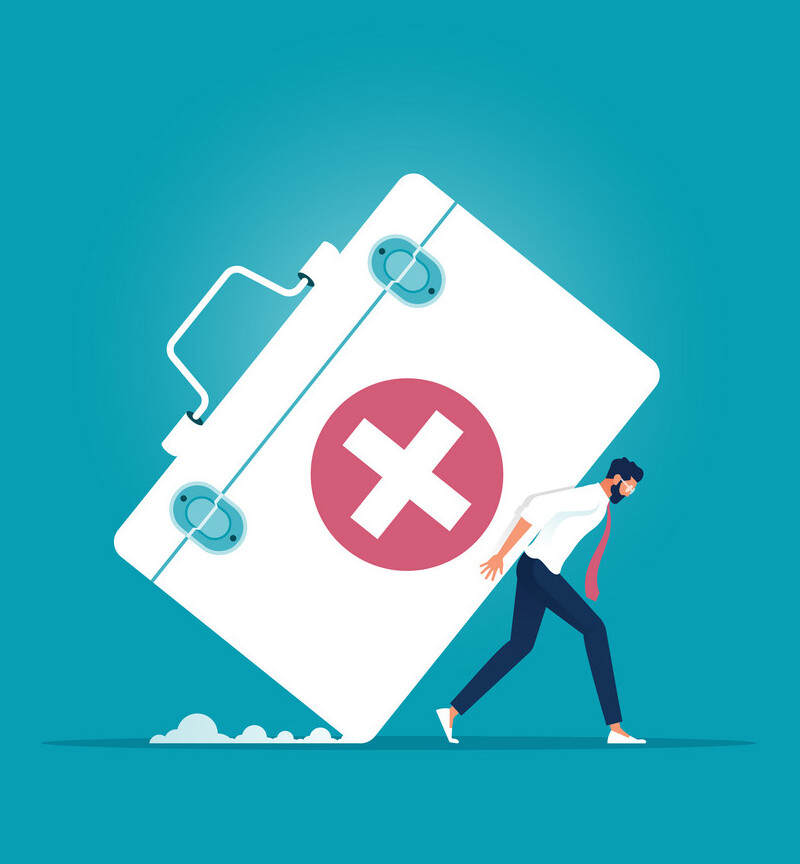
Medical billing is the process of creating and submitting claims to insurance companies to receive payment for healthcare services. The purpose of medical billing is to ensure that healthcare providers receive payment for the services they provide.
What is medical billing and why is it so important? The process of medical billing involves several steps. First, the medical biller translates the healthcare services provided by the healthcare provider into billing codes that insurance companies use to process claims. These codes include diagnosis codes and procedure codes.
Next, the medical biller submits the claim to the insurance company for payment. The insurance company reviews the claim and either approves or denies payment based on the policyholder’s coverage and the medical necessity of the services provided.
If the claim is denied, the medical biller may need to appeal the decision and provide additional information to the insurance company. If the claim is approved, the insurance company will issue payment to the healthcare provider.
Throughout the process, medical billers must follow up on claims to ensure that reimbursement is received. They may also communicate with patients and healthcare providers to resolve any issues that arise during the billing process.
In summary, medical billing is the process of generating healthcare claims and submitting them to insurance companies to receive payment for medical services. It involves translating healthcare services into billing codes, submitting claims, following up on claims, and resolving any issues that arise during the billing process.
What is Coding? A Crucial Element in Healthcare Documentation and Billing
Coding is the process of assigning standardized codes to medical procedures, diagnoses, and supplies for the purpose of medical billing, documentation, and analysis. Professional medical coders play a crucial role in the healthcare industry by reviewing and analyzing clinical documentation to ensure accurate and complete coding.
Medical coders use a variety of coding systems, such as the International Classification of Diseases (ICD) and the Current Procedural Terminology (CPT), to connect medical services with billing codes. This requires a deep understanding of medical terminology, anatomy, physiology, and pathophysiology. Accurate coding is essential to ensure that healthcare providers receive timely and accurate reimbursement for the services they provide. Reimbursement for healthcare services may be occurred by medical insurance companies, government healthcare programs, employers, or other private organizations. The type of reimbursement for healthcare depends on the healthcare service provided, the patient’s insurance coverage, and the provider’s agreement with the insurance company. Reimbursement for healthcare services may include payment for professional fees, laboratory tests, imaging studies, medications, and other services.
For example, accurate coding is critical for ensuring that Medicare and other payers cover the costs of medical services. If a service is not coded accurately or is missing necessary documentation, it may not be reimbursed. In addition, inaccurate coding can result in under- or over-billing, which can have serious financial consequences for healthcare providers and patients alike.
How Medical Coding and Billing Work Together in Healthcare?
Medical coders are also essential for monitoring healthcare trends, identifying areas for improvement, and evaluating the effectiveness of treatments. For example, medical coders can identify patterns in clinical documentation that suggest the need for additional training, staffing, or resources. Medical Coding and Billing Work Together in Healthcare. They can also analyze coding data to determine which treatments are most effective for different conditions.

In summary, medical coding and billing is a crucial element in healthcare documentation and billing. Professional medical coders play an important role in ensuring accurate and complete coding, connecting medical services with billing codes, and monitoring healthcare trends. Accurate coding is essential for ensuring timely and accurate reimbursement for healthcare providers, improving patient care, and ensuring the financial stability of the healthcare industry.
What does medical biller do?
Medical billers and coders are responsible for ensuring that medical bills are accurate, complete, and compliant with all applicable laws and regulations. Medical billing software can help streamline the billing process, making it more efficient and effective. Benefits of medical billing software include:
- Increased accuracy: Medical billing software can help reduce errors and ensure accuracy by automatically generating codes and automatically calculating payments.
- Increased efficiency: Medical billing software can speed up the billing process by allowing billers to quickly enter information into the system, reducing the amount of time needed to manually enter data.
- Improved patient experience: Medical billing software can help make the billing process more user-friendly, providing a better experience for patients.
- Increased security: Medical billing software can help protect patient data by encrypting and storing it securely.
- Increased compliance: Medical billing software can help ensure that all bills are compliant with applicable laws and regulations.
What Are the Medical Billing and Coding Training and Skill Requirements?
Medical billing and coding requires a variety of skills, including knowledge of medical terminology, computer proficiency, and an understanding of medical insurance policies and procedures. Those who decide to pursue a career in medical billing and coding should have a high school diploma or GED, although some employers may require a certificate or associate’s degree. The American Academy of Professional Coders (AAPC) offers a Certified Professional Coder (CPC) certification for individuals who have the necessary experience and training. To become certified, individuals must pass an exam and have a minimum of two years of coding experience.
What is the Process of Medical Billing?
Medical billing software is a computer program designed to streamline the medical billing process. Medical billers and coders are responsible for submitting and processing medical claims with insurance companies. Medical billing process includes medical billing software that helps these professionals by automating many of the tedious tasks involved in the billing process. This can result in improved accuracy and efficiency, as well as reduced operating costs.
What are the benefits of medical billing software for medical billers and coders?
The primary benefit of medical billing software is that it streamlines the entire medical billing process. By inputting patient information and insurance details into the software, medical billers and coders can quickly generate claims and track their status with insurance companies. The software can also be used to check for accuracy and identify any discrepancies, reducing the risk of errors and discrepancies. Medical billing software can also be used to track reimbursements from insurance companies and generate reports. This functionality makes it easier to reconcile accounts and track payments, ensuring that medical billers and coders receive the appropriate reimbursements for their services. This helps to reduce the time and effort associated with manually tracking payments and processing reimbursements.
Another benefit of medical billing software is that it can reduce the amount of paperwork required for the billing process. By automating many of the tasks involved in the billing process, medical billers and coders can reduce the amount of time spent on paperwork and focus on more important tasks. This can help to improve the efficiency of the billing process and reduce the overall cost of running a medical practice.
What is the Process of Medical Billing?
The process of medical billing includes the following steps: 1. Verify patient eligibility: Verify the patient’s insurance coverage and any applicable co-pays or coinsurance amounts. 2. Document and code services: The medical coder must review the patient’s record and assign codes to all services provided. 3. Submit claims electronically: Once the claim is complete, it is submitted electronically to the insurance company. 4. Monitor claims status: The medical biller must monitor the claim to ensure it is paid in a timely manner. 5. Follow up on denied or unpaid claims: If the claim is denied or unpaid, the medical biller must follow up with the insurance company to resolve the issue. 6. Post payments to patient accounts: Once the payment is received, the medical biller must post it to the patient’s account. 7. Generate patient statements: Once the payments have been posted, the medical biller must generate patient statements and send them out. 8. Resolve billing issues: The medical biller must be able to address any patient billing questions or issues.
Interested in Career in Medical Billing?
If you are interested in a career in medical billing, there are a variety of options available. You can attend a vocational or technical school, pursue an online certificate or degree program, or gain experience through an internship or apprenticeship. It is important to research the different options available and determine which one will best suit your individual needs and goals. Additionally, it is important to gain experience in the medical field and understand the complex coding and billing systems used by medical providers. After completing your training, you can then apply for positions in medical billing, either with a hospital, clinic, or medical office.
Electronic medical billing systems
Electronic medical billing systems are software programs that help healthcare providers to submit medical bills to insurance companies electronically. These systems have revolutionized the healthcare revenue cycle management by simplifying and streamlining the billing process. With electronic medical billing systems, healthcare providers can easily track patient billing, check eligibility, submit claims, and receive payments.
The healthcare Revenue Cycle Management includes all the administrative and clinical functions that contribute to the capture, management, and collection of patient service revenue. This process involves scheduling and registering patients, verifying insurance eligibility, obtaining pre-authorization, coding, billing, and collections.
Insurance Claim Submissions for Medical Billing is the process of submitting a bill to an insurance company for reimbursement of services rendered. Medical billing professionals use electronic medical billing systems to submit claims to insurance companies, which speeds up the process and reduces the likelihood of errors.
Common Medical Billing Errors include coding errors, billing errors, and errors related to eligibility and pre-authorization. Coding errors occur when a procedure or diagnosis is coded incorrectly, leading to under billing or overbilling. Billing errors occur when an incorrect amount is billed, leading to overbilling or under billing. Errors related to eligibility and pre-authorization occur when services are provided to a patient who is not eligible for those services or when pre-authorization was not obtained.
Accurate medical billing is essential for healthcare providers as it ensures timely and accurate reimbursement for services rendered. Accurate medical billing also helps to prevent denials and delays in payment, which can have a negative impact on cash flow. Additionally, accurate medical billing helps to prevent fraud and abuse, which can lead to costly penalties and fines.
FAQs : What is medical billing?
What are the two types of medical billing?
The two types of medical billing are professional billing and institutional billing. Professional billing is used for services provided by healthcare professionals such as doctors, nurses, and therapists in a private practice setting. Institutional billing, on the other hand, is used for services provided by healthcare facilities, such as hospitals, clinics, and nursing homes.
Which certification is best for medical billing?
The Certified Professional Coder (CPC) certification offered by the American Academy of Professional Coders (AAPC) is the most popular and widely recognized certification for medical billing and coding professionals. The certification covers multiple aspects of the profession, including procedure codes for coding and billing for medical claims in a physician’s office.
Conclusion:
Medical billing is the process of submitting and following up on claims with health insurance companies in order to receive payment for healthcare services provided to patients. It involves the use of medical codes and terminology to accurately describe and bill for medical services. Understanding the types of medical billing and obtaining the appropriate certification can be essential for success in the field.
